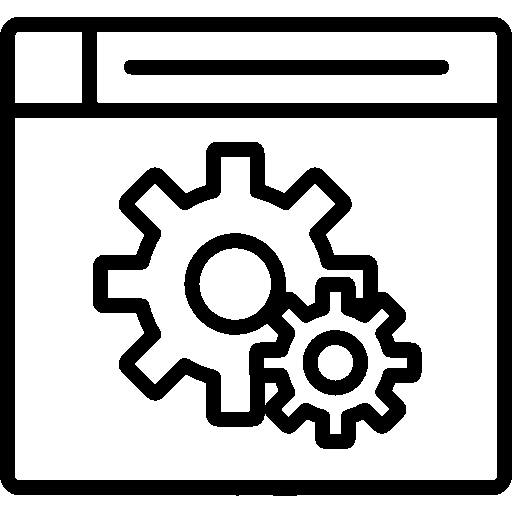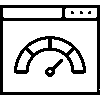- Products
- Platform
- Solutions
- Customers
- Support
- Pricing
 Website & Mobile & E-commerce
Website & Mobile & E-commerce
 CRM
CRM
 Operation & ERP
Operation & ERP
 Productivity
Productivity
 Support
Support
 Community
Community
 Learn
Learn
Application Support Point

It provides the management of web forms on your website. You can create forms as you want with the flexible form structure. You can send auto-reply emails. You can connect data such as Task, Activity, Project to incoming forms through basic components. You can connect with CRM.
- Version History
- Application Features
- User Manual
- FAQ
- Community
Aim
The purpose of the Web Forms module is to expedite users' data collection processes and enhance efficiency. It aims to minimize errors associated with manual data entry and ensures that the collected data is effectively managed within the ERP system.
Definition
The Web Forms module features dynamic form structures that enable users to collect diverse data efficiently. This module allows for the rapid creation and integration of forms into the system, streamlining data entry and management with its user-friendly interface.
Key Benefits
The main benefits of the Web Forms module include accelerating data collection processes and enhancing efficiency. It reduces errors associated with manual data entry and enables effective management of collected data within the ERP system.
Entrance
Various forms can be created according to the needs of the users. With this module, data collection processes are made more organized and systematic. Data obtained from the forms are automatically processed and managed within the system.
Forms
Forms
The Forms module is a crucial component of the data collection and management process in the ERP system. Users can create different types of forms to meet various needs, ensuring a systematic and orderly data collection process.
Delayed Forms
Delayed Forms are those not completed within the specified time frame. They are highlighted to draw users' attention for necessary actions. The system automatically tracks and reports overdue forms.

Open Forms
Open Forms are those still being worked on and not yet completed. Users can edit and add information to these forms. Open forms are actively monitored and updated in the system.

Pending Forms
Pending Forms are waiting for user actions, such as a specific transaction or approval process. These forms are prioritized and tracked in the system until the required action is completed.

Forms in Process
Forms in Process are actively being reviewed and worked on. Relevant users take necessary actions, and these forms are continuously updated and monitored.

Completed Forms
Completed Forms have all required information entered and the transaction process finalized. These forms are archived by the system and can be accessed for reporting and analysis.

Cancelled Forms
Cancelled Forms are those removed from processing and deemed invalid for various reasons. They are marked as cancelled and archived for later review.

Closed Forms
Closed Forms are defined as forms that are completed and no longer processed. These forms are archived in the system and used for reporting when necessary. Closed forms are considered to be forms where transaction processes are terminated and data is stored.

Cancelled Forms
Cancelled Forms are defined as forms that have been rendered invalid and removed from processing for various reasons. These forms are marked as cancelled in the system and archived. Cancelled forms are stored for review when necessary.

Form List
Form List
The Form List is created to provide a comprehensive view of all forms available in the ERP system. This list makes it easier for users to access and manage different types of forms. Some of the main categories and sample forms in the form list are described below.

All Forms
All Forms contains a general list of all forms available in the system and created by users. This category allows users to access all forms quickly and easily. All forms can be filtered by date, status and other criteria.

General Master
General Master contains basic forms used in various data collection and management processes. These forms are generally used for general information collection and reporting purposes. General Master forms are integrated with other modules in the system to provide data flow.

trisbi-b2b-omni
trizbi-b2b-omni includes forms specifically designed for B2B (Business to Business) transactions and omni-channel management. These forms are used in areas such as commercial transactions, order management and customer relations. trizbi-b2b-omni forms aim to increase the efficiency of businesses.

Datasay
Verisay includes forms created for data verification and analysis processes. These forms are used to ensure the accuracy of data in the system and to analyze it. Verisay forms are supported by various control mechanisms and reporting tools.

Company Mini
Company Mini includes forms specifically designed for small businesses. These forms are used to manage and report the daily operations of businesses. Company Mini forms stand out with their user-friendly interface and simple structure.

Test Site
The test site contains forms used to test changes and updates to the system. These forms allow users to test new features and improvements. Test site forms help identify errors and deficiencies in the system.

Statistics
The Statistics module is designed to analyze and interpret data within the system. It presents information derived from collecting and analyzing various data sets. This module supports users in making informed decisions and facilitates performance evaluations by providing insightful data analysis.

Settings
Summary of Form
Form özet bilgilerinin görüntülendiği ekrandır.

Form Özeti ekranında kişi seçilir. Tarih, IP Adresi, Form Aşaması, Kaynak, Kanal, Formu Dolduran Kişi, Firma Bilgileri yer alır. Formu Dolduran Kişi bilgileri, Firma bilgileri yer alır. Üst menü işlemlerinden aşama değişikliği yapılır. İşlemler menüsünden Form kapatılabilir, Form İptal edilebilir, Fırsat ve Destek Kaydı oluşturulabilir.
Form Answers
Form cevaplarının görüntülendiği ekrandır.

Form cevapları ekrnaında Tarih, Mail Gönderen, Mail Yanıtı bilgileri yer alır.
Related Persons
Metadata
Metadata alanlarının görüntülendiği ekrandır.

Metadata ekranında Anahtar Kelime, Değer, Dil bilgileri girilir.
Log Records
Log Kayıtlarının görüntülendiği ekrandır.

Log Kayıtları ekranında Kullanıcı Adı, Açıklama, İşlem Durumu, Tarih bilgileri yer alır.
General Settings
This section is used to configure the fundamental settings of the web form. Key details such as the title, description, and status of the form are defined here. Additionally, users can manage the form’s activity status and specify the languages in which the form will be presented.

Stage Definitions
This section outlines the various stages of the form process. It specifies actions to be taken after the form is submitted, approval workflows, and the roles of different user groups at each stage. Each stage is meticulously defined to ensure that the process progresses smoothly and consistently.

Form Definitions
This section is used to define the content and fields of the form. Different fields such as text boxes, drop-down menus, checkboxes are added and the properties of each field (whether it is mandatory or not, default values, validation rules) are set here.

Definitions
Under this heading, general definitions and customized settings for the form are established. This section allows for the definition of special operational rules and the adjustment of additional settings to enhance the form’s effectiveness.

Automatic Replies
The automatic responses that users will receive after submitting the form are configured in this section. Responses such as thank you messages, confirmation notifications, and error messages after the form is submitted are defined. It is also determined under what conditions these automatic responses will be sent.

Authorized Users
Under this heading, users who are authorized to use the form are defined. These settings control which users can edit the form and which users can view or manage the form data. Additionally, different authorization levels can be assigned to each user.

With these settings, the operation and use of web forms can be managed systematically and effectively.
Filtering Settings
Filtreleme ayarları, bir sistemde veya uygulamada belirli kriterlere göre verileri sınıflandırmak için kullanılır. Bu ayarlar, kullanıcıya yalnızca ilgili veya uygun içerikleri sunmaya yardımcı olur.

Filtreleme ayarları ekranında Tarih Aralığı, Sorumlu, Müşteri Bağlantısı, Website, Form, Metadata Anahtarı, Kaynak, Kanal, Durum alanları seçilerek filtreleme yapılır.
Questions
Ask questions and get answers from other Entranet users.

















